

This theory and the results of the experiments achieved within its parameters are rejected by current models of physics, not eligible for patent protection but are hereby copyrighted by Stewart A. Harris.
The laws of magnetism generally depend upon the interaction of magnetically-influenced bodies in magnetic fields which always involve dipole considerations. The current model refers to magnetism as action in either a mode of attraction or a mode of repulsion.
It is stated that the attractive force always acts perpendicular to the direction traveled by the lines of flux or force, which is always from north to south.
The interaction in either mode are governed by the law of inverse squares, which dictates that the strength of the field attracting or repelling two bodies in the field will increase inverse to the square of the distance between the two bodies. This, in attractive mode, will lead to a magnetic lock between the two bodies.
One major objection to TOMI was by the scientists at the Bureau of
Standards when it was offered by Dr. Marion Bowman for evaluation who
was an executive with the Minority Funding Corporation in the early
eighties.
Basically, it was that the law of inverse squares dictated
the magnetic lock and that any work achieved in any magnetic system
would be negated by the work required to eliminate the lock, (separate
the bodies), and reset the system to its initial state.
Their thinking was premised on the current view that interaction of bodies in a magnetic field always involve dipoles.
Tri-polar interactions are disallowed as a result of this thinking. But tri-polar interactions would require interaction between a dipole magnet and a mono pole. Of course, no mono pole exists to the known world at this point in time; however, any pole in a magnetic field which is isolated can effectively act as a mono pole.
Experiment to demonstrate this:
Get two permanent magnets, bar type. For this experiment, a 1" x 1" x 4" exemplar is fine.
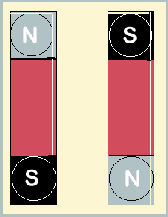
The two magnets are in attractive mode, and are equaled out in that two dipoles are interacting and four poles are operating as predicted by the laws of magnetism. For this explanation and experiment, they are of equal length.
Tri-polar interaction:
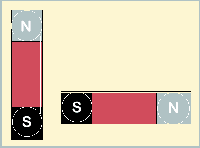
In this configuration, notice:
1. The north pole of the horizontally presented magnet is further from the north pole of the left magnet, and this distancing isolates the interaction which normally occurs at closer range.
2. There is no longer an either/or relationship between the two magnets with regard to attraction or repulsion being operative in the system, but a simultaneous attraction/repulsion function operating between the two poles of the left magnet (stationary for this experiment) and the single south pole of the right magnet(non stationary).
3. The free magnet will move, not perpendicular but parallel with the lines of force. And it will always settle at a midpoint between the two poles of the stationary magnet on the left.
4. Contrary to the law of inverse squares, there will not be a magnetic lock between the two bodies, so no work is required to separate them.
If you have problems with understand the concept of isolating the north pole on the free magnet, get another magnet which is shorter and if it can fall into or under the influence of the south pole of the stationary magnet, the experiment will then react to the standard concept which is exhibited always by bipolar interactions.
There is another method for controlling the isolation of a single pole to interact with a dipolar stationary magnet (called a track from here on.)
For this experiment you should get a third magnet. It could be the same size as the tracks, or even smaller because this configuration will control the isolation of both poles of the free track (called the runner from hereon). Use this configuration:
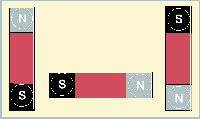
This is the basic configuration for all TOMI systems. Observe that the dual-track system cause two tri-polar interactions function or operating on two individual poles of the runner. The runner, introduced into the track, will immediately move to a midpoint within the tracks.
In TOMI this is the experiment which demonstrates 'magnetic stability.'
The major points to be gained from this, so far, is that the runner is moved by an orthogonal technique from a distance, not as a result of any opposite or equal reaction, not operating within the laws of inverse squares, and with a simultaneous push/pull action operating in a compensation mode. Motion ceases when equality in the influence of the forces exerted by the two track poles level to force_g = force_s.
I point out that the isolation of each pole is in regard to the vortex structure of the pole. The lines of flux come out of the north pole in a totally encompassing manner so that it forms line of force across the vortex. You might compare it to a circle with an outer diameter. The circumferential bounds are what operate with the two poles of the track magnet, each operating on each side.
TOMI will function on any plane from flat to 90 degrees vertical. It will move the mass and/or levitate it straight up.
A levitation model leads to a question concern energy and force.
When the mass (runner) is levitated via a TOMI configuration,
simultaneous trip-polar interactions without the use of a prime mover,
with no connection via gears, cams, belts, etc., one must ask: How is
the 'energy' transmitted or transformed? There is no doubt that work
is accomplished when the mass is lifted, and in our macro world there
is a resultant consideration for PE under PE = mgh.
Using the length
of f" with our experimental magnets, since TOMI under stability
considerations dictate the runner will be moved to a midpoint, then
the runner will be lifted to a height of 2". So the levitated model
would instill a PE equal to m * g * 2".
No matter what you do, the 'stability' implementation of TOMI will always lead to the runner seeking a point midway within the track system, whether it is horizontally oriented or vertically oriented, or any angle from 0 to 90 degrees.
The TOMI configuration can be implemented with the tracks to the side, as described hereto, or above the runner, under the runner, or completely around the runner, as long as they are done in pairs. There will be no valid seeking of stability at a midpoint if any arrange of tracks in odd numbers above 1 is tried, as a unit.
Let me clarify:
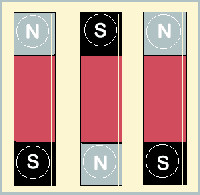
Three tracks aligned as above will lock together and if you try to put a dipole runner over or under this arrangement, nothing works.
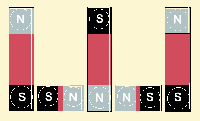
In the above configuration, two TOMI systems are functioning with a single central track operating as a bound for both runners. The runners will be lifted to a midpoint. This brings up the question of alleged PE in a permanent magnet.
If PE is the operating entity which caused the motion of moving both runners to a midpoint, then it follows that the entropy should be increasing twice a fast for the central track than for the two outside tracks, since it would seem that the PE for all three tracks at the initial state and the central track is sustaining twice as much mass.
This arrangement can be extended for an indefinite level of connected systems.
My own experiments have had such levitation models up for, in one instance, 10 years, in another, 13, years. I observed no change in the heights of the runners during those periods of time.
Once the runners have reached 'stability,' of course no work is done on the system.
In regard to energy considerations, it should be noted:
If you take the original 1 x 1 x 4 magnets you would use in the original experiments, take just one of the bar magnets and cut in in half along its longitudinal presentation, then you will have a new set of tracks, each with half the mass of the original single bar magnet.
Take those two new 'half-tracks' and configure them as TOMI tracks for the same runner you used in the first experiments. The runner will rise to the same height and settle at the same point of stability as for the larger system. The same work is accomplished by half the mass used in the earlier track system.
Using the formula to calculate work:
Since the runner mass is the same in both experiments, and the result is the same, (height = 2"), then does the same energy level exist within two different quantities of mass?
It would seem the energy level is the same in the two different-sized systems if you consider the calculation for E.
So much for the 'stability" aspects of TOMI. So far, although it does demonstrate contradictions of current laws of physics, this is not efficient, and it is not the technique for retrieving the benefits of magnetic 'instability.'
Instability in a TOMI system is a manufactured doubling of the 'energy,' 'force,' whatever you wish to proffer as the mechanism for motion in the system. I will summarize my conclusions at the end.
I will show you how to install this and describe the parameters for applications.
An initial point to be established is 'Boundary Poles.'

Boundary Poles are the extreme outside poles in a TOMI system setup for operation in an 'instability' mode. In the above, 'n' and 's' are the BPs. BPs establish track lengths.
Understand the principle of the vortex of a pole:
I am legally blind so it may not be absolutely clear, but I will try:
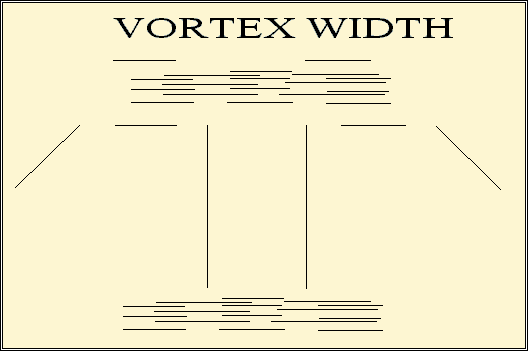
Vortex size represents the face presented as a result of the flux lines welling out of the pole ends of a permanent magnet.
"Instability" is established in a TOMI system by arranging that the Vortex Size (VS) is greater than the distance between two poles, or a dipole unit.
Take a bar magnet and cross cut a single longitudinal face:

N and s equal Boundary Poles.
N and S equal Inner Poles
By make cross-cuts along the longitudinal face of a bar magnet, you create close to the heart's desire of Quantum Physics, not a 'mono-' but 'manypole' condition.
So instability occurs when the Vortex Size presented to the manypole face creates a situation wherein the vortex size is greater than the distance between each of the inner poles and, as a result, cannot find that stability it finds with a system which has only Boundary Poles.
Using the original setup for TOMI with crosscut faces, the runner will, on a horizontal level, traverse the full length of the 4" track and then escape the tracks and roll away. It will always traverse the full length of the tracks in any event. Vertically, it will lift the runner to the height of f", doubling the result of a TOMI system with stability, only OBs.
If you do this experiment, (remembering we were to crosscut only one longitudinal face on each track), then you will have a demonstration of a system which contains, at the same time, two separate and individual forces or energy levels, whichever you prefer to think of them as. Turn smooth faces inward, and you get a result for stability. Turn the cut faces inward and you get the results of instability, always double that of stability.
If you think of the system being a system of magnetic PE, then it would seem that by making the crosscuts, you have created energy. If you argue that energy is not created, then some free energy is tapped from somewhere.
If you wish to argue that the cross-cutting, in and of itself adds energy to the magnet, then it must be explained why the entire magnet does not activate the energy added by the cross-cutting. And if you take a grinder and grind the crosscuts back down to a flat surface, you will never see anything but a loss despite the fact that you have argued doing work on the system just added energy.
Notice that this process, first the cross-cutting, then the grinding, reduces mass, which, in accord with E being equivalent to m, should dictate a continuous loss or elimination, destruction of any energy.
Yet one can now take the ground-down magnets and make new crosscuts on the ground-down surface, and the runner will once again rise to its full height.
You can take one of the single bar magnets and cut it in half as one done earlier, and then crosscut one face of the now much smaller magnets; and using the same runner, it will rise again to its full height of 4" Grind those faces down and it will be returned to it stability situation and only be capable of doing half the work. And capability to do work is the definition of energy; right? Energy: The ability to do work.
So far, all experimental to demonstrate empirically the basic premises of TOMI.
Now to applications.
I should note that all applications of TOMI, exist ant, reproduced, or offered, are rejected by science, the DOE, Bureau of Standards, NASA, All scientists except a very few, and the Patent Offices of the world.
All applications are said to be 'self-starting, use no outside energy inputs, and would seem to run until the basic structure collapses.' IOW, 'perpetual motion.'
As presented thus far, to the extent you do the experiments and observe the results, tri-poler magnetic field reactions occur, which are not accounted for in the current model of physics, the law of inverse squares attributed to permanent magnets is suspended, simultaneous push-pull actions are observed, contrary to the third law of motion, two forces or levels of energy exist in the same mass; they can be doubled or destroyed, and I see no evidence of denigration in the system.
To put this system to work, engineering is required to create an exchange between the magnetic force causing a mass to rise or levitate orthogonal and gravity which will implement any PE established as a result of the change in height of the mass.
Nothing else is required. No mechanisms, no connections to any outside devices.
Such a system is as follows:

Effectively, /\ is the basic exchange mechanism. I refer to this exchange as an exchange of dominance between the magnetic force to give way to gravity. You can put any number of /\s together because each is a separate system. If you want to prove this to yourself, simple reverse the order of connecting the separate incline sets.
This is accomplished by making sure that on the 'upcline,' that the mass is carried to a point where enough of its mass is beyond the upper apex point to cause the floor to fall away and succumb to the decline ruled by gravity.
Entrance parameters:
The OB of the tracks establish a dividing line as to directional issues.
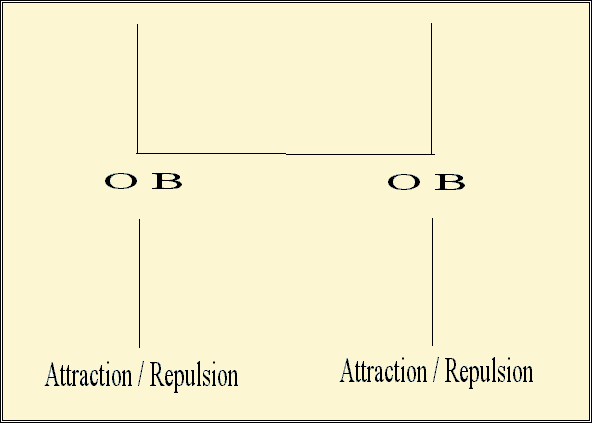
When designing applications for continuous motion via the proper exchange of dominance between magnetic for and gravity force, one must be certain that when the runner (mass) is > 50 toward the direction you wish the runner to move.
If you are behind the a/r line, you will stop the mass. If 51 percent of the mass is before the a/r, the runner will not only not experience any repulsion force to overcome, but will be sucked into the next magnetic incline.
Proper engineering will lead to placing four linear inclines into a wheel, and much like a hamster in its exercise cage, the runner will constantly seek to rise up one arc of the wheel, which upsets the equilibrium of the balanced wheel, and will cause rotation in a direction opposite to the direction traveled by the runner.
A circular but flat system can be implemented by keeping the up clines straight and curving the down inclines, designing cruelly to avoid catching on the down slopes.
A simple demonstration of continuous motion, eliminating the horrible objection of TOMI being self-starting, can be built by setting a track at a 45-degree angle on either side of a incline, which revolves on an axis.
If you want to test this against the third law of motion, against the 'thrust vs orthogonal lift issue,' it can be done by building a bridge for the tracks which clear a scale and upon which the mass can be weighed. Then move the mass into the system, and it will be levitated with no consequent reverse indication of weight registered on the scale, which would be required if thrust as in the third law of motion were in effect.
I do not expect the dedicated scientists such as George Brown or Steve Spence, and a few others to ever do the experiments; however, I see there are some young, enquiring mind who are looking for new concepts, beyond what they are stuck with now. Here is a start for those people.
I also do not intend to argue about this. A 13-year-old girl in Dallas recently won a prize for presentation of a four-incline model. So if she can do it and you can't, sorry on you.
As for the energy considerations, with two energy levels coexisting in the same mass, or forces, if you like, I really believe the laws as proposed today need revisiting.
Oh, my original model did carry a load while going up and down the inclines, so the question: Can it carry a load/' is answered in advance.
As for entropy, I seriously doubt it exists simply because no one is able to calculate a beginning energy pool for the system nor how long it will run in any given system, moving any given mass.
As for energy being equivalent to mass, well, I have cut mass down and down and get the same results; so if it is energy which is running this, then I can destroy it by destroying and isolating the mass, then cut more and get the same result.
Also, it would be difficult to claim that disorder is occurring in the large magnet after it is shown that, after reducing the mass, it still does the same work.
'Hey, my magnet ran down. I'll just cut it in half and restore it to its original ability to do work (energy restoration)'
Good luck to those who are really inquiring. For the rest, you will now have to debunk the results of inquiring minds, provided they are not scientists. It seems scientist shy away because of what appears to be a 'rocking of the boat.'
tomitire
